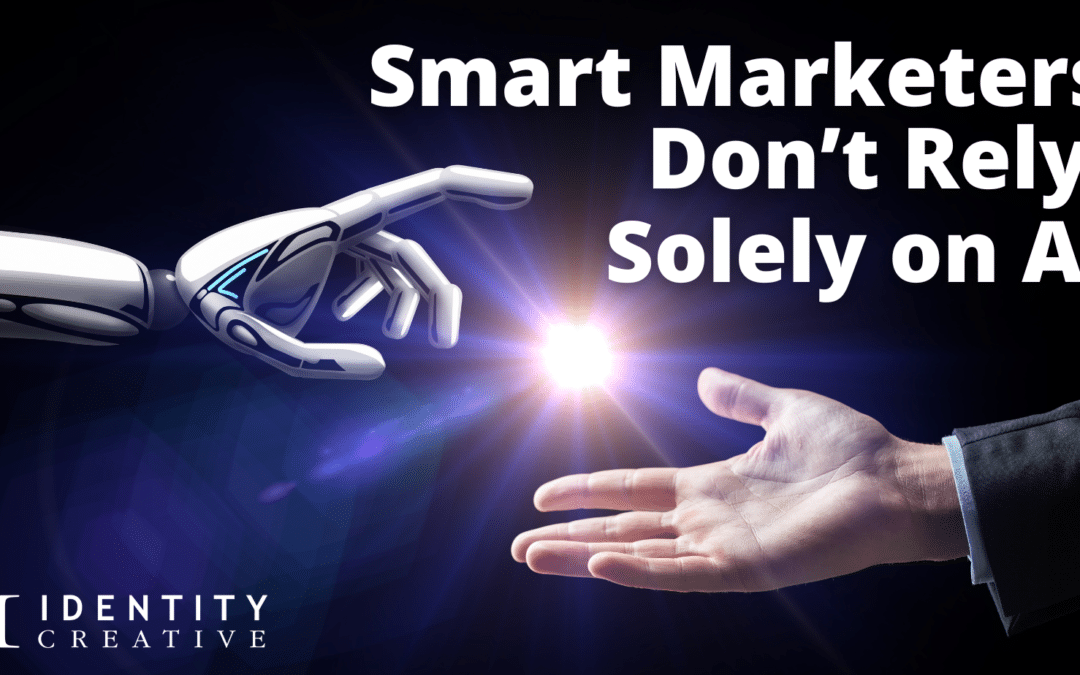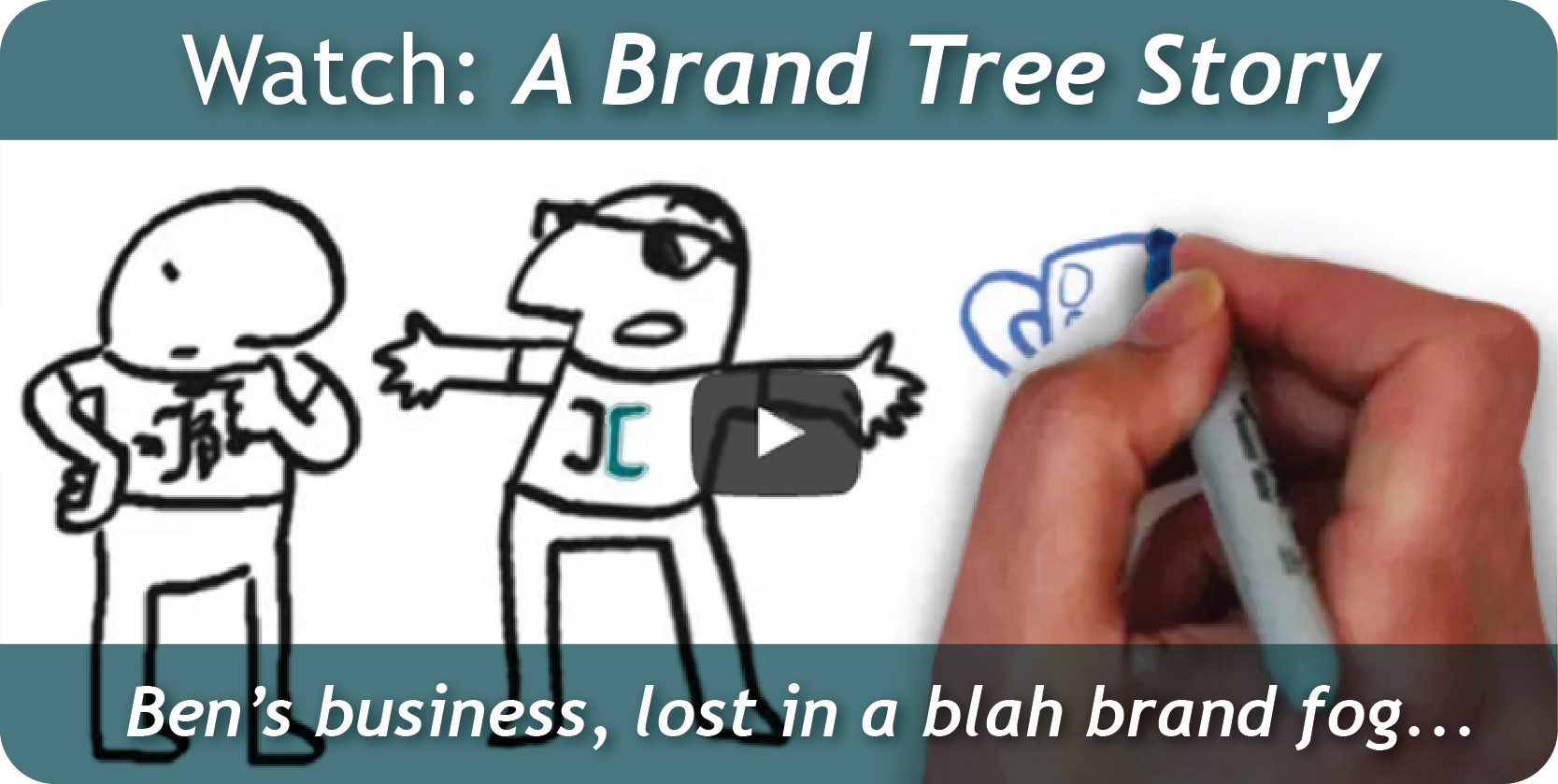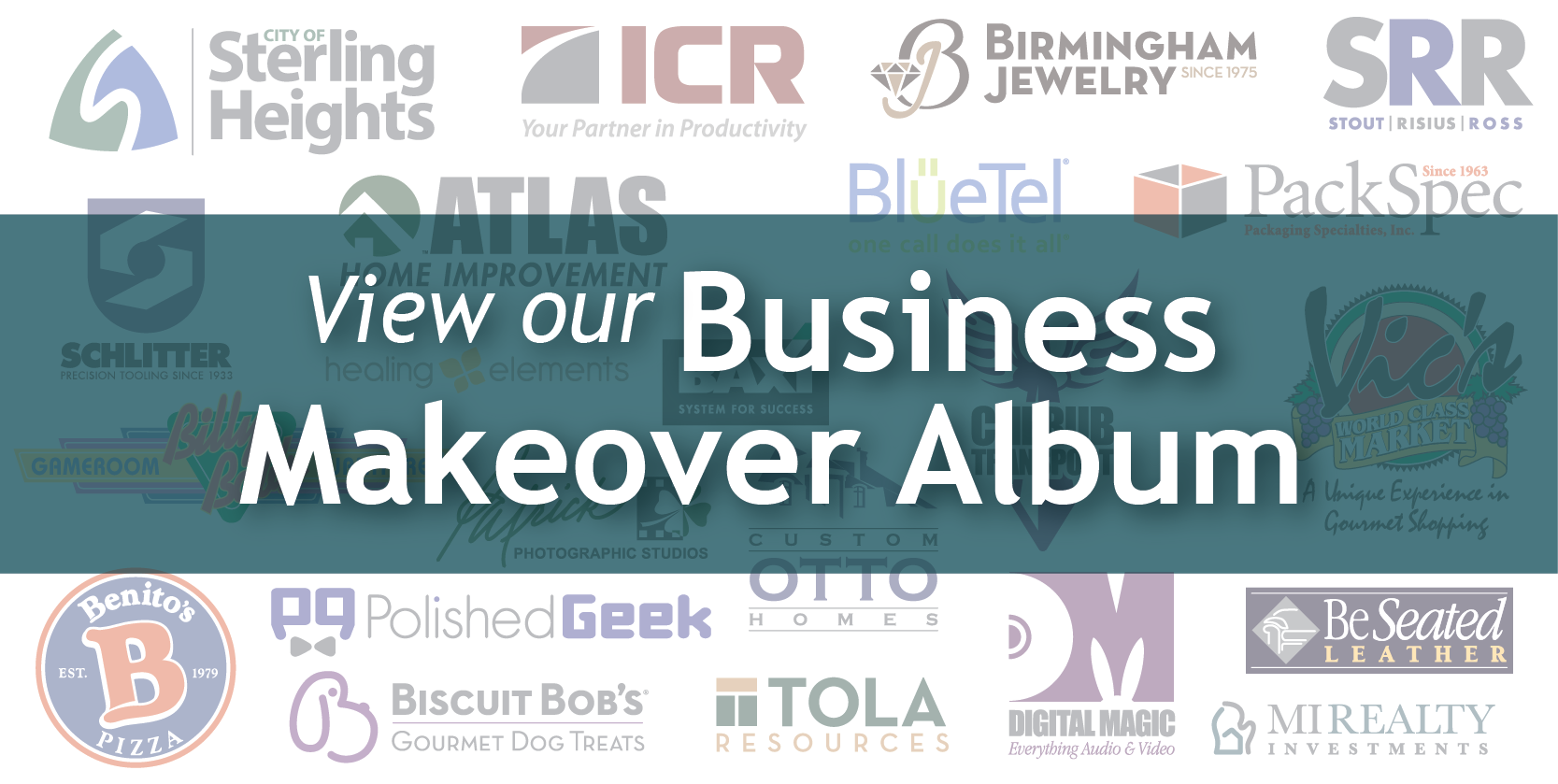Should you use AI to write your website pages, blogs, books, video scripts, and social posts? If so, then how? Smart Marketers Don’t Rely Solely on AI: Here’s seven steps to leverage AI with your company’s subject matter experts.

One Business Owner’s Question: How can AI help us in our marketing?
Last week a client asked me, “How can AI help us in our marketing? I’ve been hearing that it has a lot of potential.” It’s a valid question and I’d been wanting to talk with him about it. While he’s been building a global manufacturing company, generative AI has come along and is making a big splash.
I explained the recent explosion of generative AI in LLMs (Large Language Models) and in image creation, highlighting some of the exciting possibilities and its limitations with important cautions.
We talked about his company’s marketing priorities as related to their sales goals, and the strategies currently in place. Then we explored possible ways we can leverage AI in content generation, data analysis, and market research.
“Content is King,” but publishing AI-generated content alone is a royal mistake.
Generative AI won’t do our jobs for us. At first glance it may appear so, but we’re definitely not there yet. And AI won’t fix marketing problems. Even worse, publishing pure AI content can work against your online marketing goals.“Content is King,” but publishing AI-generated content alone is a royal mistake.
Don’t Publish Unguided AI-Generated Ouputs
The more we explore, the more our team has become pretty quick at detecting unguided AI outputs published online.
“Unguided AI outputs” is my way of describing AI-generated content that has been published without human input. While LLMs are continuously improving at break-neck speeds, they still lack in areas that require human editing, especially to meet EEAT standards.
What is your purpose in creating content? If it’s to boost our SEO ranking, and present you as the authority on the subject, then publishing unguided AI generated content will miss the mark.
Generative AI Has Limits: It Lacks EEAT
If our human minds can detect AI-generated content, search engines can do even more so. In December of 2022, Google announced that it will expand its measure of the search results it produces to four criteria: E-Experience, E-Expertise, A-Authority, and T-Trustworthiness.
EEAT standards are good news for marketers who want to produce content that adds value. If you’re a company that offers real solutions with quality and exceptional service, you’re already ahead in the EEAT realm. You’ve just got to get it out there with content that includes your:
- Brand tone and message
- Specific subject matter expertise
- Elaborating on unique case studies
- Sharing customer and employee experiences
For a deeper dive into Google’s EEAT measure, Boostability has a helpful post on meeting EEAT search requirements.
Just like baking a cake in a faulty oven results in a soppy mess, trying to create lead-generating content using AI alone is a recipe for failure.
Content Marketing: Let’s Demystify, Modify, and Qualify AI
Humans + Machine = EEAT Quality Content
Start with your SMEs (Subject Matter Experts)
You have experts in your company with content in their brains that has the potential to create powerful lead-generating content. Every company we work with has them. But for a number of valid reasons, getting these people to write or do a video is like pulling teeth. They’re not marketers; they’re experts who have many demands on their time.
It’s been a standard practice for marketers to hire a copywriter to conduct interviews with SMEs. It requires experience to skillfully tease out relevant information that prospects and customers need to know, then turn it into digestible content.
That interviewing skill remains essential, and now, generative AI can assist the copywriter to ratchet up the content generation. Together, the talented copywriter, working with AI can, meet the EEAT requirements that search engines promote. AI tools can help marketers more efficiently publish a greater quantity of valuable content that attracts ideal customers.
Start with your SMEs (Subject Matter Experts)
You have experts in your company with content in their brains that has the potential to create powerful lead-generating content. Every company we work with has them. But for a number of valid reasons, getting these people to write or do a video is like pulling teeth. They’re not marketers; they’re experts who have many demands on their time.
It’s been a standard practice for marketers to hire a copywriter to conduct interviews with SMEs. It requires experience to skillfully tease out relevant information that prospects and customers need to know, then turn it into digestible content.
That interviewing skill remains essential, and now, generative AI can assist the copywriter to ratchet up the content generation. Together, the talented copywriter, working with AI can, meet the EEAT requirements that search engines promote. AI tools can help marketers more efficiently publish a greater quantity of valuable content that attracts ideal customers.
7 Steps to Leverage AI with Your Company’s Subject Matter Experts
Here’s an example of how you can use generative AI as an assistant to turn your company’s experts’ knowledge into original, valuable, lead-generating content.
- Record an interview with your SME (Subject Matter Expert) and use an AI Transcript Tool, like Otter.ai or TurboScribe, to capture the conversation. If it’s a video meeting, like Go To Meeting or Zoom, make sure you’ve enabled their built-in AI transcriber.
- Review the transcript to clean up parts that lack clarity or that the transcribing tool may have misunderstood, and remove any sensitive or proprietary information that was part of the conversation.
CAUTION – Proprietary Information: The content we put into LLM applications is open game, and even when some tools promise “walls of protection” with a subscription, there are risks.
We state in our company’s AI policy that we will remove or modify brand names and proprietary information from content and prompts. AI is untethered, it’s like the wild west of information. Would you publish sensitive proprietary information on your website? Don’t risk putting it into a globally shared data base. - Submit the conversation to your preferred LLM AI-generator. Commonly recognized names offer free versions, such as Gemini, CoPilot, ChatGPT4o, and Claude. I suggest submitting the transcript to several LLM tools and compare. For a deeper dive into LLM tools, TechTarget has a good review of its 12 top picks for 2024.
- Write prompts that will use your transcript to generate articles, social posts, video scripts, podcast outlines, email newsletters, and subject lines.
- You’ll get mounds of text, and here’s where the heavy lifting starts. You’ll need humans that know your company. They need to:
- Sort through the content and weed out generic-sounding AI pablum
- Add brand-specific tone and messaging
- Add relevant trademarked tools and tips
- Include details that could not be generated by AI, like specific case studies, customer reviews, and performance stats
- Review the drafts with your SMEs to confirm accuracy.
- Make final revisions on the drafts with any edits by the SMEs
- Create visuals, audio, and video to support the content
- Place the copy in the existing marketing content strategy
- Publish per your content marketing calendar
- Determine measurable goals, such as tracking engagement and leads generated, and set dates to review reports so you can drop what isn’t working and do more of what does.
“To AI or not to AI, that cannot be the question!”
Marketers have three choices when it comes to approaching generative AI:
- Ignore it.
- Play with it.
- Dive into it.
Generative AI is not going away and it is gaining traction at impressive speed. As business leaders and marketers, we always need to keep our fingers on the pulse of what is happening in our industry. The BBC recently interviewed copywriters and found widely differing opinions on how it is impacting their careers, from elated to depressed. Whatever our opinions are about AI, but it is here, and we need to lasso it.
Our goal at Identity Creative is to dive into the generative AI tools wisely. We’ve invested in AI learning opportunities for our team and created an AI Policy for Responsible Use.
As branding and marketing professionals, if we want our clients to succeed, we need to adapt. What have you tried that worked? What are your clients asking for? How can we learn together? Share your thoughts and let’s dive in!!
P.S. This post was written without AI (and a little editing help from Grammarly)!




